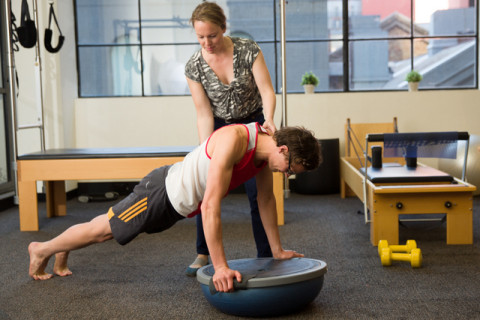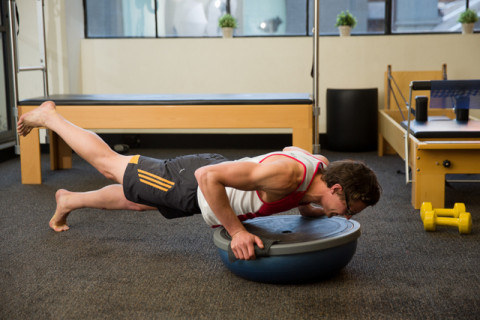The crossover between the principles of Osteopathy and Functional Movement Analysis make it an area of vital importance to the highest quality Osteopathic treatment.
FUNCTIONAL MOVEMENT SCIENCE
Applied Functional Science works on the premise that how we move very much affects the structures of the body
Taking the view that the body works as a whole chain, the trained Osteopath can quickly recognise deficits in one area that may be detrimentally affecting others.
Using what we know about how the body moves, the goal is to create an environment where the body can learn correct movement patterns specific to their function (or dysfunction). This is rooted in the idea that we want to focus on a client being successful at a movement or exercise, rather than focus on what they are inefficient at.
By using movement as a method of analysis, diagnosis, treatment, and rehabilitation, the functional practitioner ensures that the client can return to doing what they want to do, rather than focusing on avoiding the things that cause them pain.

CROSSOVER WITH OSTEOPATHY
One of the founding principles of Osteopathy is that the body only requires assistance in finding its own way to health. Osteopathy also works on the notion that the body is a unit, where one area will affect the others, and that different physiological systems will affect others. In addition to the body being interconnected, there is a reciprocal relationship between structure and function, meaning that these also affect one another.
The goal of a good Osteopath is to find the health in each client, rather than finding disease (which is much easier). This leads to a focus on positive methods for allowing the body to find its own way to achieve health, rather than focusing on what the body is deficient at.
Above all else, Osteopathy is a principle-based therapy. It works on foundations of the human body and the notion that each person is an individual.
HOW WE APPLY FUNCTIONAL MOVEMENT
The intersections between Osteopathy and Applied Functional Science lead to a principle-based approach to tailoring outcomes for patients, rather than broadly generalising interventions. Approaching the body as a kinetic chain, the Osteopath will focus on what is the root cause of an individual’s pain or movement pattern before attempting to create an environment of success for the body, which can be equated to finding health, rather than focusing on disease.


